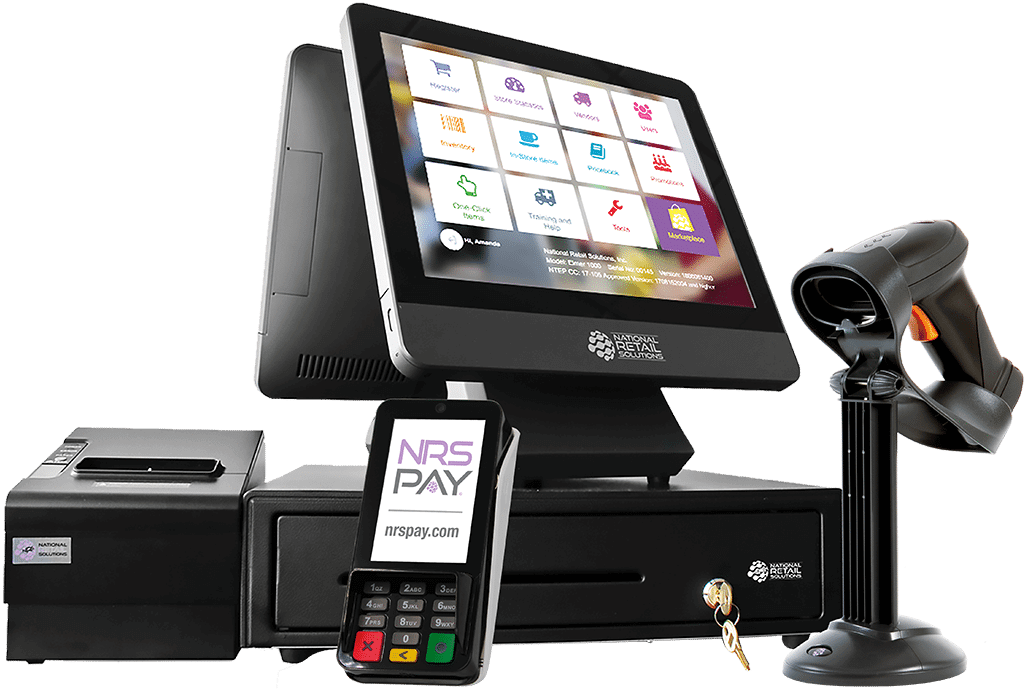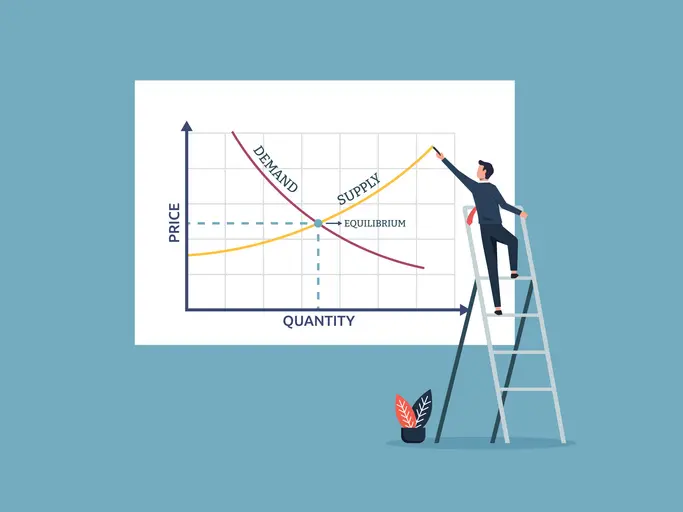The secret behind having the right amount of stock and avoiding stockouts is the balance found in a sophisticated inventory management technique known as perpetual inventory. Perpetual inventory is an advanced inventory management system that continuously updates stock levels in real-time. This approach helps businesses maintain optimal stock levels, reducing both stockouts and excess inventory. The article explores how perpetual inventory works and zooms in on its benefits, limitations and provides a step-by-step implementation guide and insights into future trends shaping inventory management.
What is Perpetual Inventory?
Perpetual inventory is a real-time inventory management system that continuously tracks stock levels. Unlike periodic inventory methods, perpetual systems update records instantly with each transaction, including sales, purchases, returns, and adjustments. This approach enhances stock visibility and accuracy, reducing stockouts and overstock issues. Retailers leveraging perpetual inventory have seen significant improvements in operational efficiency, with some reducing stockouts by 30% within the first year of implementation.
Make stockouts a thing is the past.
How Perpetual Inventory Works
Perpetual inventory systems integrate with point-of-sale (POS) software, e-commerce platforms, and warehouse management tools to synchronise transactions instantly. When a sale is made, stock levels update immediately; when new inventory arrives, it is scanned into the system, ensuring real-time accuracy. Businesses using barcode scanning and automated tracking achieve near-perfect inventory accuracy, allowing them to optimise stock levels, identify discrepancies, and respond swiftly to demand fluctuations.
Perpetual inventory vs. periodic inventory
Perpetual and periodic inventory systems differ primarily in their update frequency, data accuracy, operational complexity, and cost implications.
| Feature | Perpetual Inventory | Periodic Inventory |
| Update Frequency | Real-time updates with every transaction | Updates at set intervals (e.g., weekly, monthly) |
| Data Accuracy | High accuracy due to continuous tracking | Lower accuracy, prone to errors between counts |
| Operational Complexity | More complex, requires integrated systems and technology | Simpler, relies on physical counts and manual records |
| Cost Implications | Higher initial setup costs, lower long-term costs | Lower initial costs, potentially higher long-term costs due to inefficiencies |
Perpetual inventory excels in environments where real-time data and accuracy are critical. For example, a large e-commerce company I consulted with switched from periodic to perpetual inventory and saw a 25% reduction in carrying costs due to better stock optimization. While periodic inventory might be suitable for smaller businesses with limited stock and infrequent transactions, perpetual inventory offers significant advantages for larger operations where precise and timely inventory management is essential.
Benefits of Perpetual Inventory
Perpetual inventory systems bring multiple advantages that boost operational efficiency and profitability. These benefits come from real-time stock visibility, automated processes, and enhanced inventory accuracy, enabling businesses to make informed decisions and optimise inventory management.
Optimised Inventory Management
Real-time stock visibility helps businesses prevent overstocking and stockouts, ensuring the right balance of inventory. With accurate demand forecasting, companies can adjust purchasing and stocking strategies to improve cash flow, reduce storage costs, and maintain product availability. One retailer reduced stock levels by 20% while enhancing product accessibility using a perpetual inventory system.
Data-Driven Decision Making
Perpetual inventory provides real-time insights into stock levels, sales trends, and purchasing patterns, supporting better forecasting and supply chain management. This enables businesses to respond swiftly to market changes, optimise production schedules, and refine marketing strategies. A manufacturer leveraging real-time data improved on-time deliveries by 15%.
Enhanced Operational Efficiency
Automation in perpetual inventory systems minimises manual tasks, reduces human error, and streamlines workflows. By eliminating manual inventory counts and data entry, businesses can cut costs and boost productivity. A distribution company implementing an automated system reduced labour costs for inventory management by 40%, freeing up resources for higher-value tasks.
Empower your supply chain towards agility and resilience with intelligent, intuitive and innovative software.
Challenges of Perpetual Inventory Systems
Despite their advantages, perpetual inventory systems have limitations that can affect implementation and efficiency. These challenges are especially relevant for smaller businesses or those lacking the necessary technological resources, making adoption more complex and potentially costly.
High Implementation Costs
Setting up a perpetual inventory system requires significant investment in software, hardware, and system integration. Costs for inventory management software, POS systems, and scanning equipment can be a barrier, especially for small businesses. While long-term efficiency gains can justify the expense, the initial financial outlay can be a challenge.
Dependence on Data Accuracy
The reliability of a perpetual inventory system hinges on accurate and timely data entry. Errors in recording transactions can lead to discrepancies between system records and actual stock, resulting in stockouts or overstocking. Maintaining accuracy requires strict data management processes, staff training, and regular audits.
Technology Vulnerability
Perpetual inventory systems rely heavily on technology, making them susceptible to system failures, power outages, and cyber threats. Any disruption can impact real-time updates and compromise inventory accuracy. To mitigate risks, businesses must invest in IT infrastructure, backup solutions, and cybersecurity measures.
Inventory Valuation Methods in Perpetual Inventory
Inventory valuation plays a crucial role in determining stock value and influencing financial reporting. Perpetual inventory systems use various valuation methods, each with distinct rules and financial implications. The chosen method affects cost calculations, profit margins, and overall financial statements.
FIFO (First-In, First-Out): Assumes the oldest inventory is sold first, aligning well with the actual flow of goods, especially for perishable items. It results in lower COGS and higher net income during periods of rising prices, as older, cheaper inventory is sold first.
LIFO (Last-In, First-Out): Assumes the most recent inventory is sold first, which can reflect current market costs better, particularly in volatile markets. It results in higher COGS and lower net income during price increases, potentially lowering tax liabilities.
Weighted Average Cost: Calculates an average cost for all inventory items, smoothing out price fluctuations. Useful for indistinguishable goods and frequent price changes, providing a consistent valuation for COGS and ending inventory.
Key Components and Technologies in Perpetual Inventory
A perpetual inventory system depends on integrated tools that enable real-time tracking and accurate stock management. These technologies automate processes, minimise errors, and ensure inventory data remains consistently updated.
Inventory Management Software
The core of a perpetual inventory system, inventory management software automates stock tracking, updates, and reporting. It integrates with POS and e-commerce platforms, enabling real-time inventory visibility, automated reordering, and demand forecasting. This improves accuracy, streamlines operations, and supports data-driven decision-making.
POS System Integration
Seamless integration between POS systems and inventory software ensures real-time stock updates with every sale. This eliminates manual updates, reduces discrepancies, and improves inventory accuracy. Retailers benefit from automatic stock adjustments, preventing stockouts and enhancing customer service.
Barcode and RFID Technology
Barcode and RFID systems automate item identification and tracking, reducing manual errors and speeding up inventory processes. Barcodes provide quick scanning for inventory updates, while RFID allows real-time tracking of multiple items at once, making it ideal for large-scale operations and warehouse management.
Implementing a Perpetual Inventory System
Adopting a perpetual inventory system enhances inventory management but requires strategic planning, execution, and continuous maintenance. A structured approach ensures seamless integration and long-term success.
Planning and Preparation
Successful implementation begins with assessing business needs, setting clear objectives, and selecting the right technologies. Businesses should evaluate current inventory processes, identify key goals (e.g., reducing stockouts or improving fulfillment times), and choose suitable inventory management software, POS systems, and tracking tools. A pilot program can help test the system before full deployment, allowing early issue identification and adjustments.
Data Migration
Transferring accurate inventory data into the new system is essential for reliability. This involves cleaning and organising existing data, correcting errors, and using migration tools to ensure a seamless transition. Proper validation ensures all product details, quantities, and locations are correctly recorded, laying a strong foundation for system accuracy.
Staff Training
Employee training is crucial to ensure smooth adoption. Staff should learn how to record transactions, use barcode or RFID scanners, and analyze inventory reports. Hands-on training sessions, along with accessible resources like manuals and video tutorials, help reduce errors and improve efficiency. Well-trained employees maintain system accuracy and optimize daily operations.
Maintenance and Updates
Regular maintenance and updates keep the system effective and prevent disruptions. Businesses should schedule routine software updates, hardware checks, and inventory audits to identify discrepancies. Assigning system upkeep responsibilities ensures ongoing reliability and high inventory accuracy. Proactive maintenance reduces errors and enhances long-term system performance.
Industries That Benefit Most from Perpetual Inventory Systems
Retail
Retailers rely on perpetual inventory systems to maintain accurate stock levels, reduce stockouts, and enhance customer satisfaction. Real-time inventory tracking helps optimise stock management across multiple sales channels, such as physical stores and e-commerce platforms. This enables seamless omnichannel operations, quick restocking of fast-selling items, and dynamic pricing adjustments based on inventory levels.
Manufacturing
Manufacturers use perpetual inventory to improve production planning, optimise raw material usage, and reduce lead times. Real-time tracking of materials, work-in-progress, and finished goods ensures smooth operations by preventing shortages and production delays. With enhanced visibility, manufacturers can better align inventory with demand, leading to improved efficiency and cost savings.
Key Formulas in Perpetual Inventory Systems
Economic Order Quantity (EOQ)
EOQ determines the optimal order size to minimise total inventory costs, balancing ordering and holding expenses. The formula is:
- D = Annual demand
- S = Ordering cost per order
- H = Holding cost per unit per year
Using EOQ helps businesses reduce excess stock and optimise purchasing, leading to significant cost savings.
Cost of Goods Sold (COGS)
COGS calculates the direct cost of inventory sold during a given period. In perpetual inventory systems, it updates dynamically based on real-time transactions:
The valuation method (FIFO, LIFO, or weighted average) determines how costs are allocated, ensuring accurate financial reporting.
Gross Profit
Gross profit measures a business’s profitability, calculated as:
With real-time updates, businesses can track profitability continuously, adjusting pricing and promotions for better financial performance.
The Future of Perpetual Inventory Systems
Technological advancements are transforming perpetual inventory systems, enhancing accuracy, efficiency, and automation. Emerging innovations will make inventory management more dynamic and responsive to business needs.
AI and Machine Learning (ML)
AI and ML improve demand forecasting, optimise stock levels, and automate decision-making. These technologies analyse vast datasets to identify patterns, helping businesses predict demand more accurately and adjust inventory in real time. AI-driven reorder point adjustments enhance stock efficiency, reducing stockouts and overstocking.
Cloud-Based Solutions
Cloud-based inventory management offers flexibility, scalability, and remote accessibility. Businesses can manage inventory across multiple locations in real time, benefiting from automatic updates, data security, and enhanced collaboration. Centralised cloud solutions streamline operations and improve system reliability.
Internet of Things (IoT)
IoT devices, such as sensors and smart tags, enable real-time inventory tracking and monitoring. These technologies improve visibility by continuously updating stock location, condition, and movement. IoT applications in warehouses enhance operational efficiency, ensuring optimal storage conditions for perishable goods.
By integrating these advancements, businesses can achieve greater inventory accuracy, efficiency, and agility, leading to improved performance and profitability.
Businesses are shifting towards automation and orchestration because it works. Efficiency, intelligence and profitability are guaranteed.






